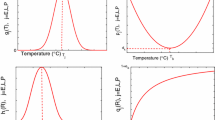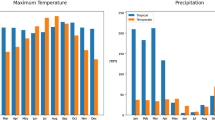Abstract
We propose a patch type model for mosquitoes that have aquatic larvae inhabiting ponds. Partial differential equations (PDEs) model the larvae on each of several disconnected patches representing the ponds, with conditions varying in each patch, coupled via the adults in the air. From the PDEs a scalar delay differential equation, with multiple delays, for the total adult mosquito population is derived. The various delays represent the larval development times in the patches. The coefficients contain all the relevant information about the sizes and geometry of the individual patches inhabited by the larvae, the boundary conditions applicable to those patches and the diffusivity of the larvae in each patch. For patches of general shapes and sizes, and without the need to specify the criteria by which an adult mosquito selects an oviposition patch, the modern theory of monotone dynamical systems and persistence theory enables a complete determination of the conditions for the mosquito population to go extinct or to persist. More detailed biological insights are obtained for the case when the patches are squares of various sizes, which allows a detailed discussion of the effects of scale, and for two particular criteria by which mosquitoes might select patches for oviposition, being (i) selection based solely on patch area, and (ii) selection based both on area and expected larval survival probability for each patch. In some parameter regimes, counterintuitive phenomena are predicted.
Similar content being viewed by others
References
Barrera R (1996) Competition and resistance to starvation in larvae of container-inhabiting Aedes mosquitoes. Ecol Entomol 21: 117–127
Bédhomme S, Agnew P, Sidobre C, Michalakis Y (2005) Pollution by conspecifics as a component of intraspecific competition among Aedes aegypti larvae. Ecol Entomol 30: 1–7
Bentley MD, Day JF (1989) Chemical ecology and behavioral aspects of mosquito oviposition. Ann Rev Entomol 34: 401–421
Blaustein L, Kiflawi M, Eitam A, Mangel M, Cohen JE (2004) Oviposition habitat selection in response to risk of predation in temporary pools: mode of detection and consistency across experimental venue. Oecologia 138: 300–305
Blaustein L, Kotler BP (1993) Oviposition habitat selection by the mosquito Culiseta longiareolata: effects of conspecifics, food, and green toad tadpoles. Ecol Entomol 18: 104–108
Bond JG, Arredondo-Jiménez JI, Rodríguez MH, Quiroz-Martínez H, Williams T (2005) Oviposition habitat selection for a predator refuge and food source in a mosquito. Ecol Entomol 30: 255–263
Cantrell RS, Cosner C (1996) Models for predator-prey systems at multiple scales. SIAM Rev 38: 256–286
Edgerly JS, Mcfarland M, Morgan P, Livdahl T (1998) A seasonal shift in egg-laying behaviour in response to cues of future competition in a treehole mosquito. J Anim Ecol 67: 805–818
Eitam A, Blaustein L (2004) Oviposition habitat selection by mosquitoes in response to predator (Notonecta maculata) density. Physiol Entomol 29: 188–191
Gu W, Regens JL, Beier JC, Novak RJ (2006) Source reduction of mosquito larval habitats has unexpected consequences on malaria transmission. Proc Natl Acad Sci USA 103: 17560–17563
Gu W, Utzinger J, Novak RJ (2008) Habitat-based larval interventions: a new perspective for malaria control. Am J Trop Med Hyg 78: 2–6
Hale JK, Waltman P (1989) Persistence in infinite-dimensional systems. SIAM J Math Anal 20: 388–395
Heard SB (1994) Imperfect oviposition decisions by the pitcher plant mosquito (Wyeomyia smithii). Evol Ecol 8: 493–502
Koenraadt CJ, Takken W (2003) Cannibalism and predation among larvae of the Anopheles gambiae complex. Med Vet Entomol 17: 61–66
Murray JD (2003) Mathematical biology Vol II: spatial models and biomedical applications. 3rd edn. Interdisciplinary Applied Mathematics, vol 18. Springer, New York
Okubo A, Levin SA (2001) Diffusion and ecological problems: modern perspectives, 2nd edn. Interdisciplinary applied mathematics, vol 14. Springer, New York
Smith HL (1995) Monotone dynamical systems: an introduction to the theory of competitive and cooperative systems. Mathematical surveys and monographs, vol 41. American Mathematical Society, Providence, RI
Spencer M, Blaustein L, Cohen JE (2002) Oviposition habitat selection by mosquitoes (culiseta longiareolata) and consequences for population size. Ecology 83: 669–679
Thieme HR (1992) Convergence results and a Poincaré-Bendixson trichotomy for asymptotically autonomous differential equations. J Math Biol 30: 755–763
WHO (1995) Vector control for malaria and other mosquito borne diseases. WHO Technical Report Series, Geneva
Author information
Authors and Affiliations
Corresponding author
Additional information
S. Ruan—Research was partially supported by National Science Foundation Grant DMS-1022728.
Rights and permissions
About this article
Cite this article
Gourley, S.A., Ruan, S. A delay equation model for oviposition habitat selection by mosquitoes. J. Math. Biol. 65, 1125–1148 (2012). https://doi.org/10.1007/s00285-011-0491-8
Received:
Revised:
Published:
Issue Date:
DOI: https://doi.org/10.1007/s00285-011-0491-8




